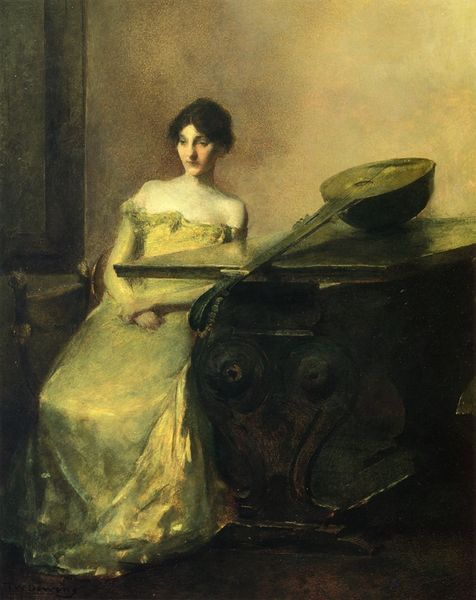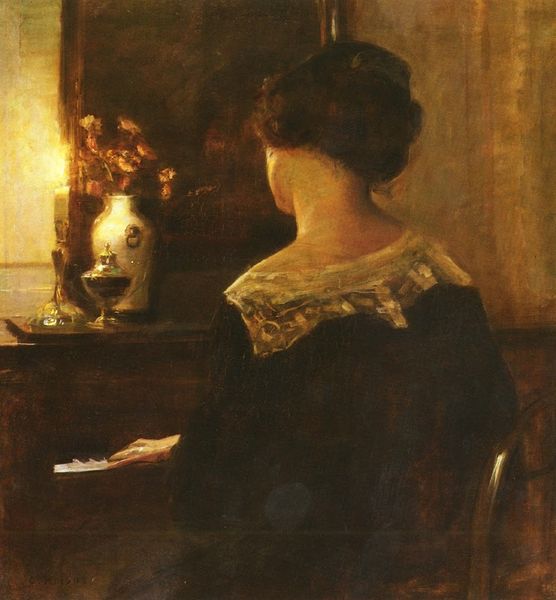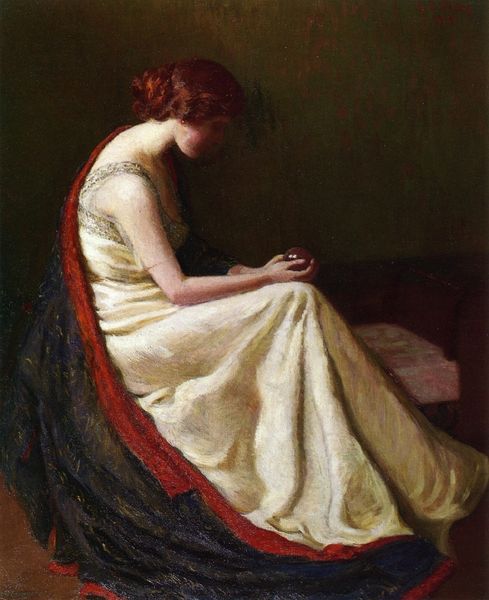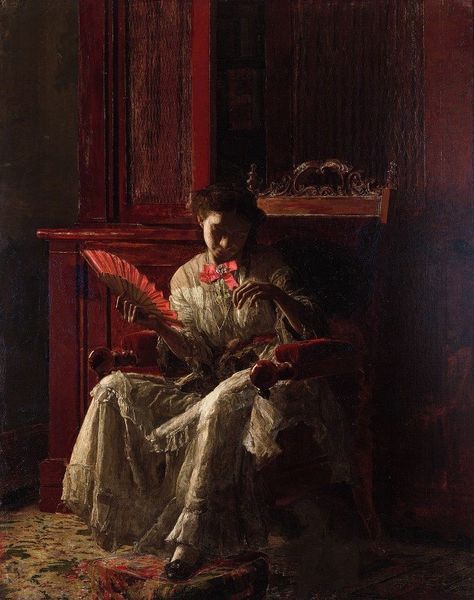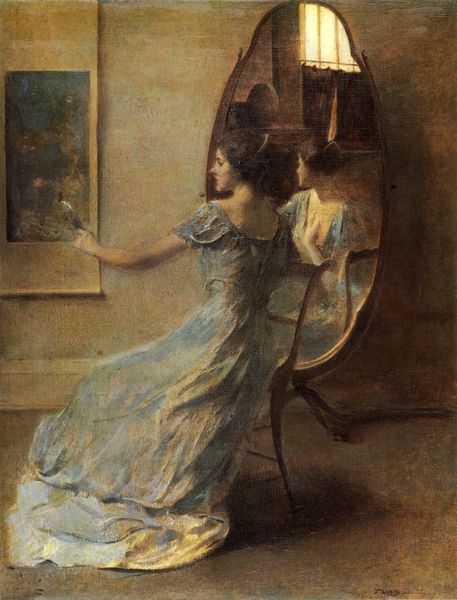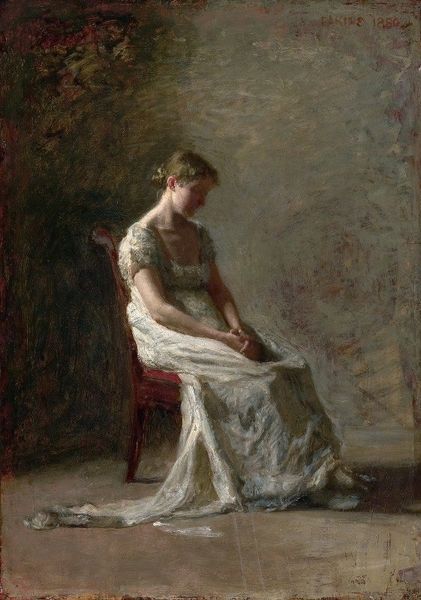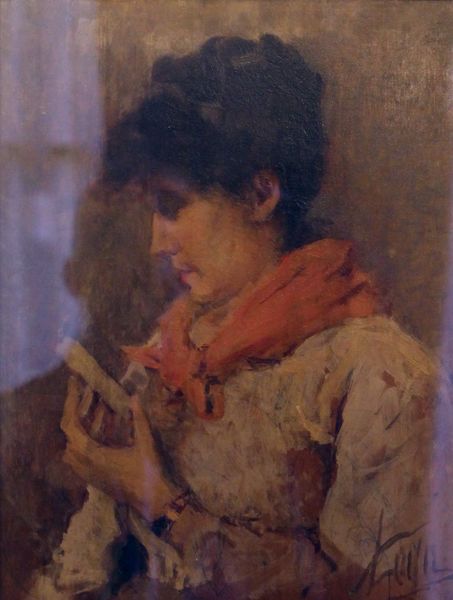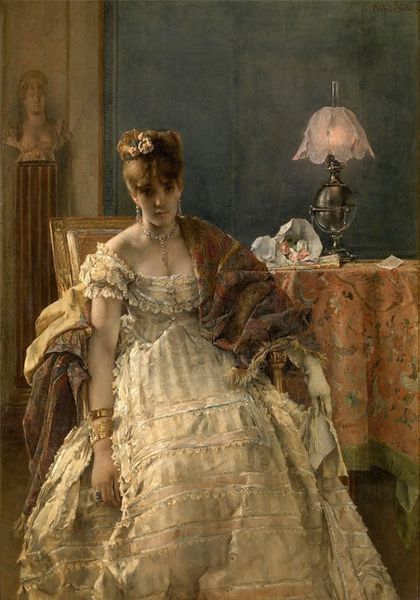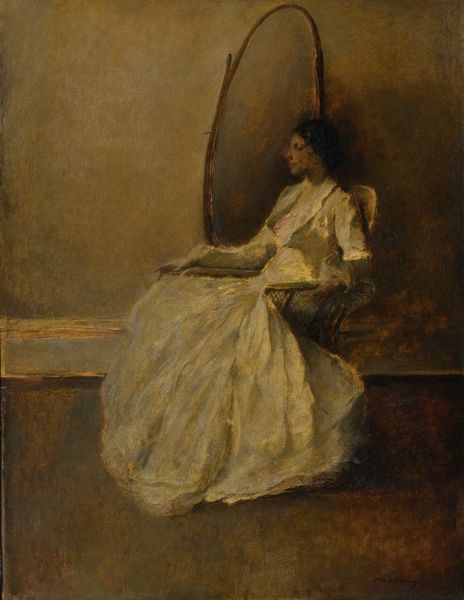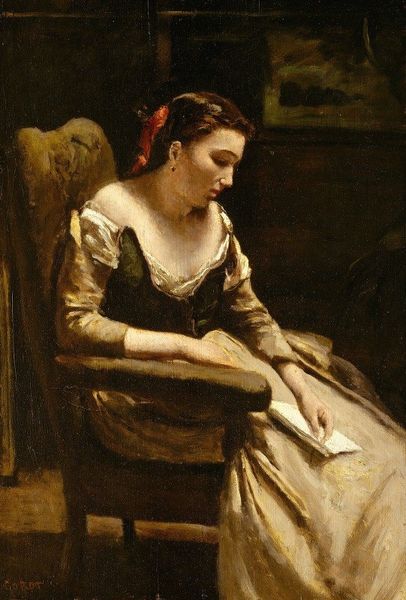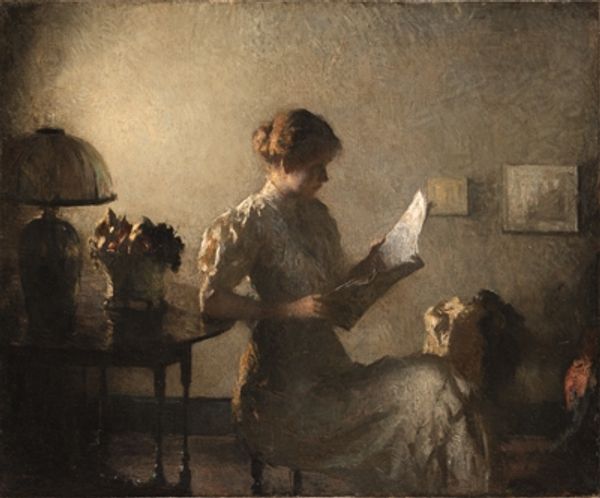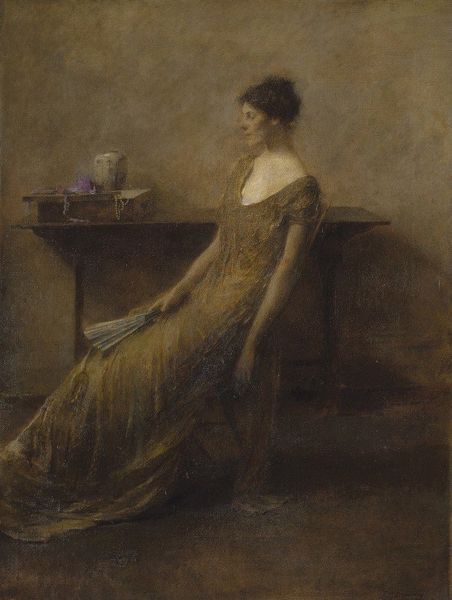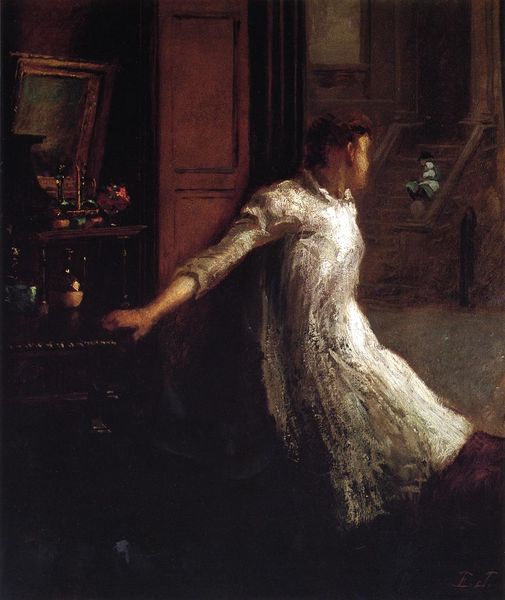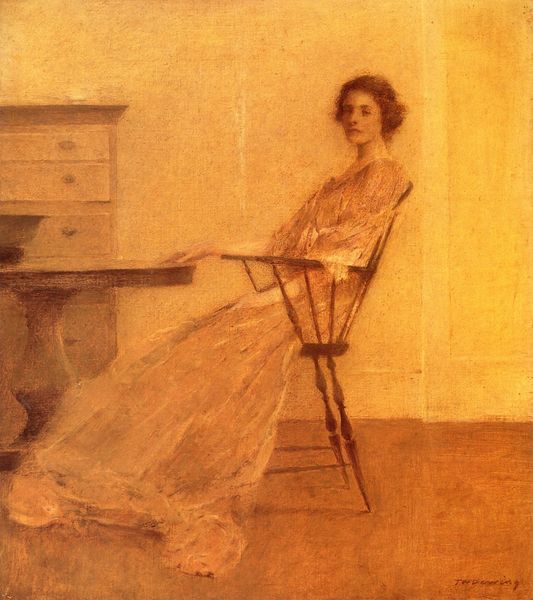
painting, oil-paint
#
portrait
#
painting
#
oil-paint
#
figuration
#
genre-painting
#
academic-art
#
realism
Copyright: Public domain
Curator: Joseph DeCamp’s “The Guitar Player,” created around 1911 and now held in the collection of the Museum of Fine Arts, Boston, offers a quiet scene bathed in subtle light. Editor: It’s…understated, almost melancholy. There’s a beautiful young woman, yes, but there’s something…subdued about her. Curator: The formal composition is striking: a pyramidal structure balanced between the figure and the architectural details of the background. DeCamp employs a limited palette. Consider how the light seems to define her features. The treatment of the dress in contrast to the neutral background creates this visual tension, this feeling of the sitter emanating light. Editor: And it makes me wonder who she is. This is from a time of immense social upheaval and women were finding their voices and spaces, but the title suggests only a performative role rather than a portrait of agency. The guitar could also symbolize this tension. Is she playing for herself, or for others? Curator: An intriguing point. Her downcast gaze could indeed signify inward reflection, yet within a genre painting style, one where she remains, nonetheless, the object of the viewers' regard. DeCamp's brushstrokes also guide our reading. Look closely at the treatment of her dress—the fabric dissolves and shimmers as the eye moves downward. The use of Impressionistic strokes to convey volume and form is what elevates this piece. Editor: It brings to mind Virginia Woolf's exploration of interiority—a painting that, although adhering to academic and realist traditions, begins to scratch at the surface of conventional gendered portrayals. Though unnamed and framed within societal expectations, could the musician be a subtle resistance through artistry and a space to be at once subject and object of creative expression? Curator: That’s a compelling interpretation, especially considering that turn-of-the-century context. This approach enriches and adds another layer to how we analyze this work of art. Editor: Exactly. The potential contradictions are where the conversation opens. Thanks for this viewing opportunity.
Comments
No comments
Be the first to comment and join the conversation on the ultimate creative platform.
